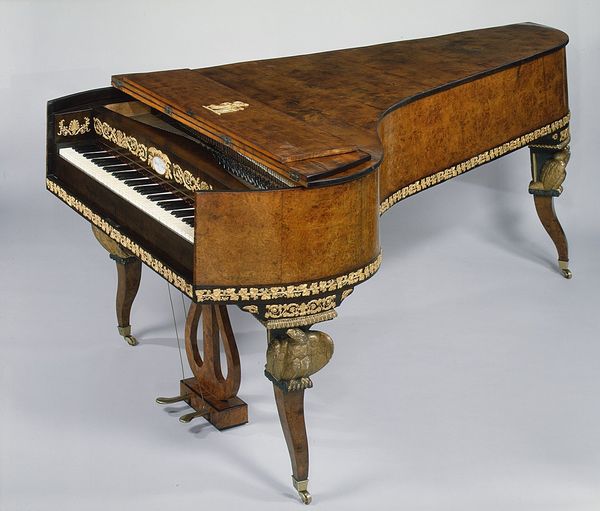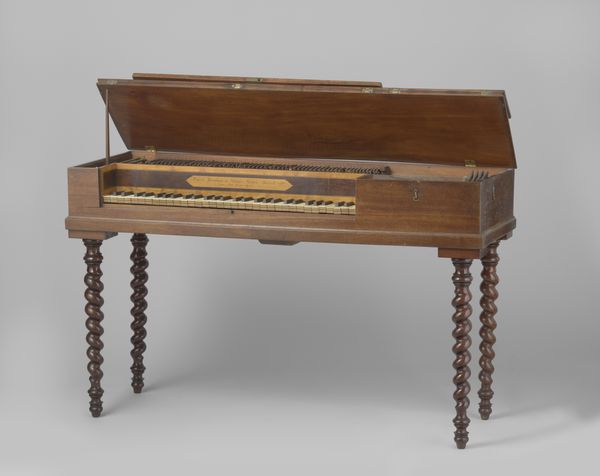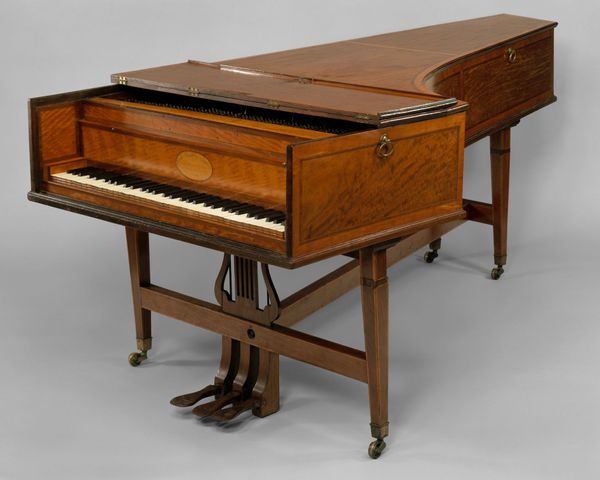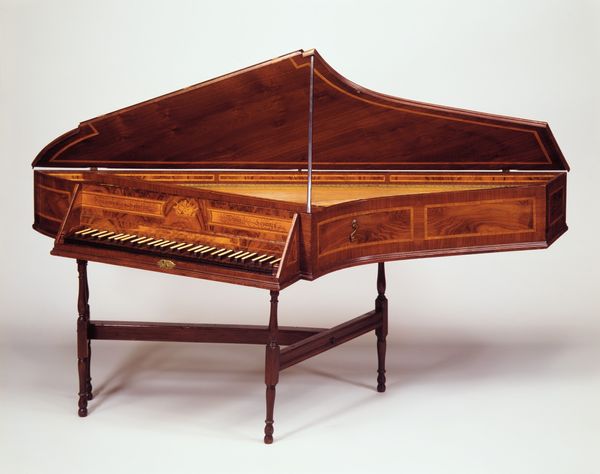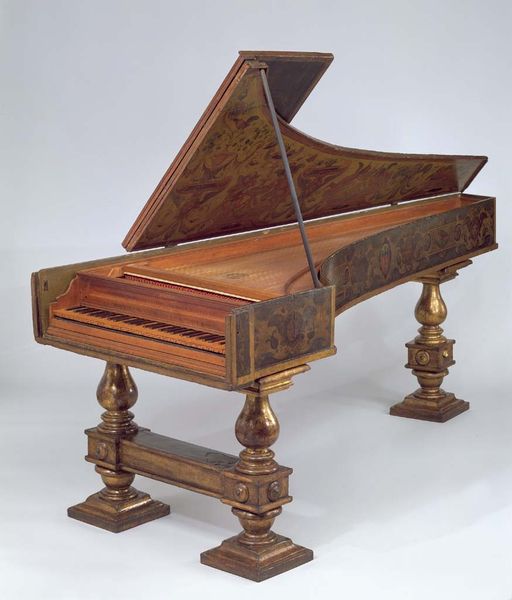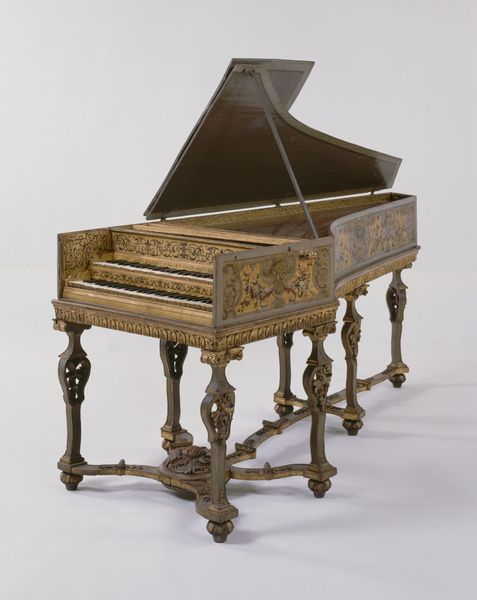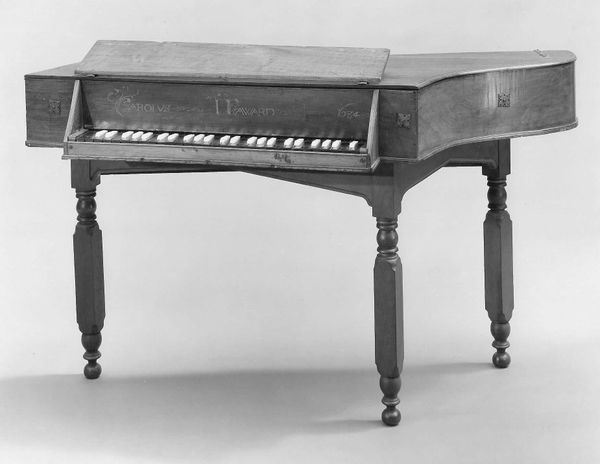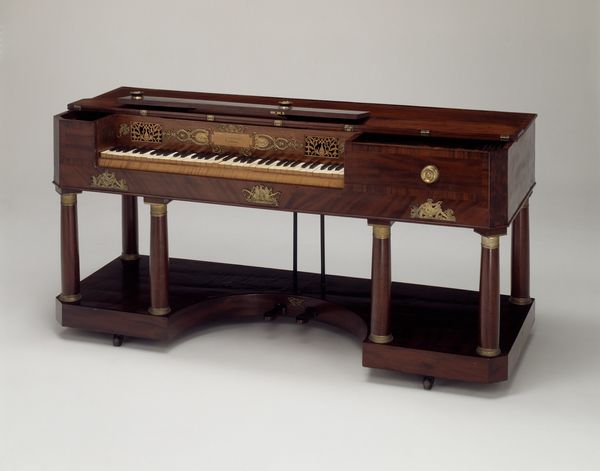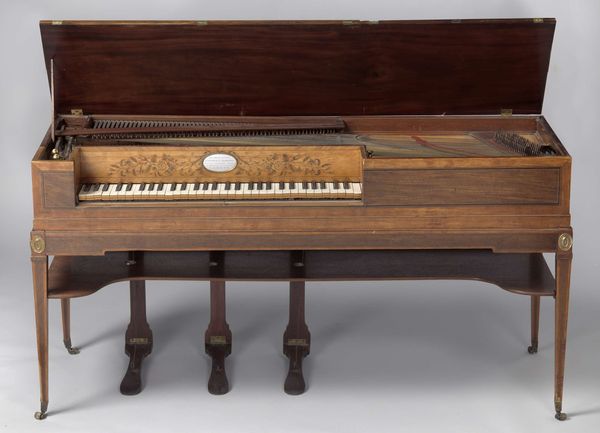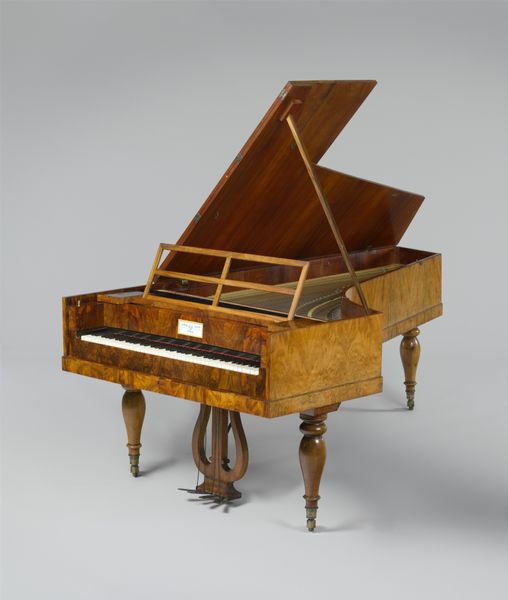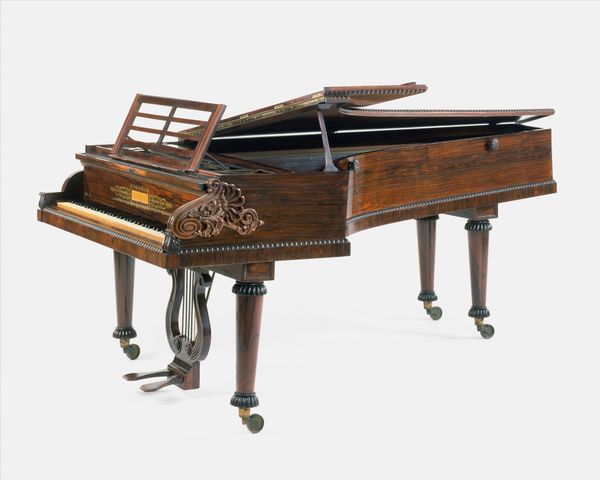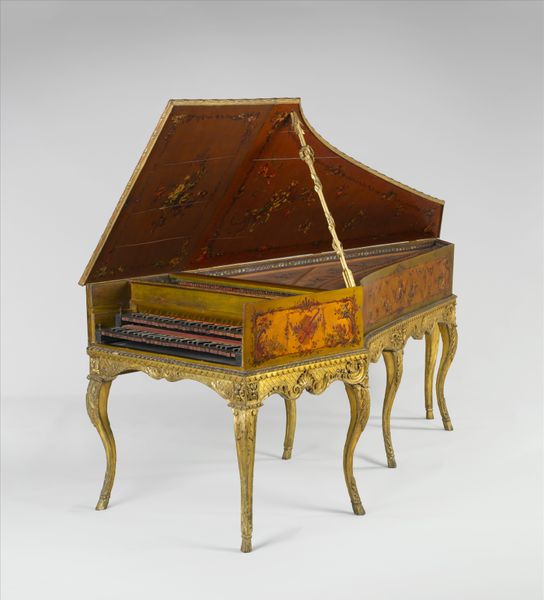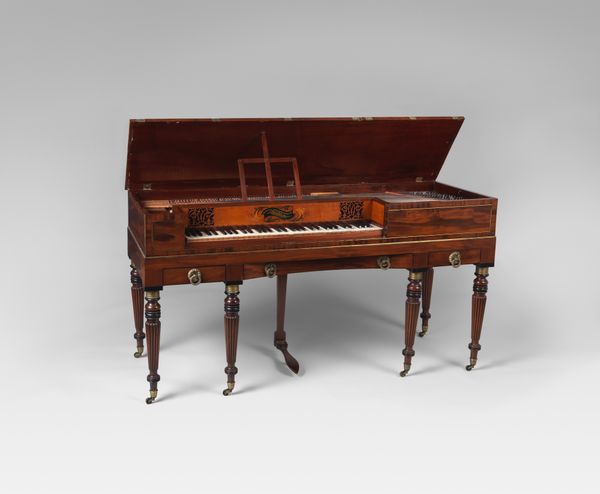
carving, wood
#
carving
#
sculpture
#
men
#
united-states
#
wood
#
musical-instrument
#
decorative-art
Dimensions: Width across lid: 51.5 cm. (20.25 in.) Diameter: 25.5 cm. (10.6 in.) Height without lid: 24.9 cm. (9.8 in.)
Copyright: Public Domain
Curator: Well, isn't this just precious? There's an immediate sense of Victorian sentimentality about it, like a dollhouse come to life. Editor: Indeed. We're looking at a Toy Square Piano, dating from sometime between 1860 and 1880. It's an intriguing example of decorative art, crafted by Charles Martin Crandall. It appears to be made primarily of wood, including some carving. Curator: Wood, yes, but it also makes me think about childhood gender roles, doesn’t it? The deliberate design seems to encourage young girls toward domestic hobbies – musical refinement carefully entwined with societal expectations. Who was the ‘Florence’ of Crandall's 'Florence Most House’? Editor: That’s a crucial point to consider. Crandall's toys became emblematic of idealized American childhood during this era. This miniature piano not only reflected the Victorian era’s values of cultivating feminine accomplishments but also perpetuated societal expectations of young women in the domestic sphere. Curator: Absolutely, we have to look at toys critically, not just as innocent objects, but as active participants in shaping cultural norms. So this piano is a perfect example. It seems both innocent, as a child's plaything, but is doing real work in perpetuating very specific cultural expectations. Editor: The mass production of toys like this also speaks to a growing middle class with disposable income and leisure time dedicated to childhood education. It demonstrates how material culture reinforced Victorian family structures and class dynamics. Curator: Exactly. Beyond its adorable form, it offers valuable insights into nineteenth-century America's intersection of childhood, class, and gender roles. Examining art like this expands art history, making it much richer and reflective. Editor: Yes, analyzing an object such as this allows one to observe how toys functioned not just as playthings, but also as reflections of broader cultural trends and social norms prevalent during the late 19th century. It serves as an important artifact reflecting American culture in the Victorian era. Curator: Thanks, that perspective is so essential! I'll certainly consider that when I think of other works we will encounter in the exhibit. Editor: A deeper appreciation of American life in 1880 - a very useful lens to use to see the piano within.
Comments
No comments
Be the first to comment and join the conversation on the ultimate creative platform.
